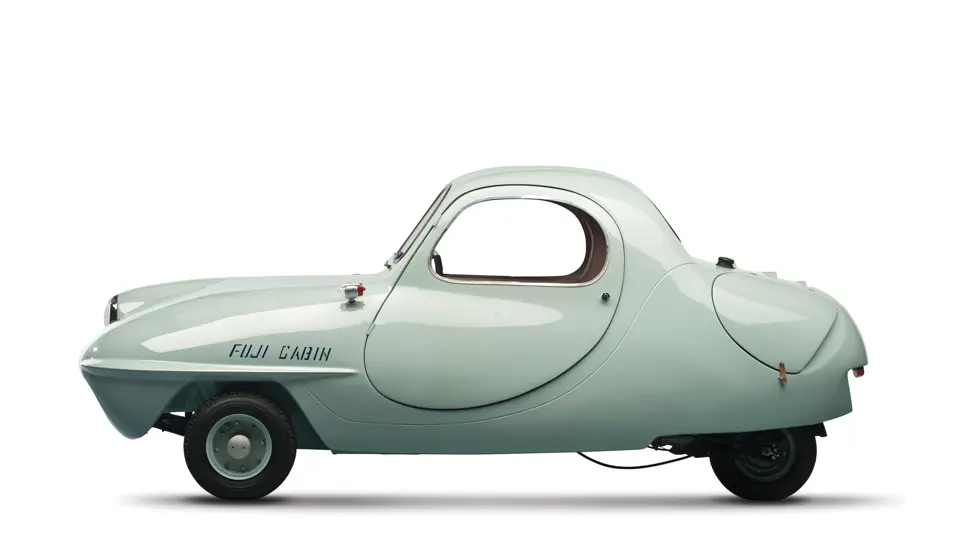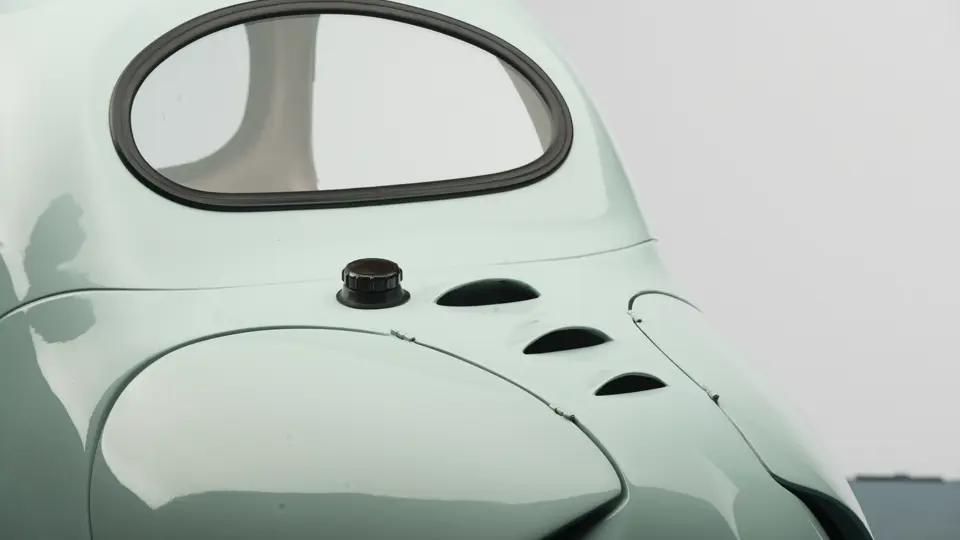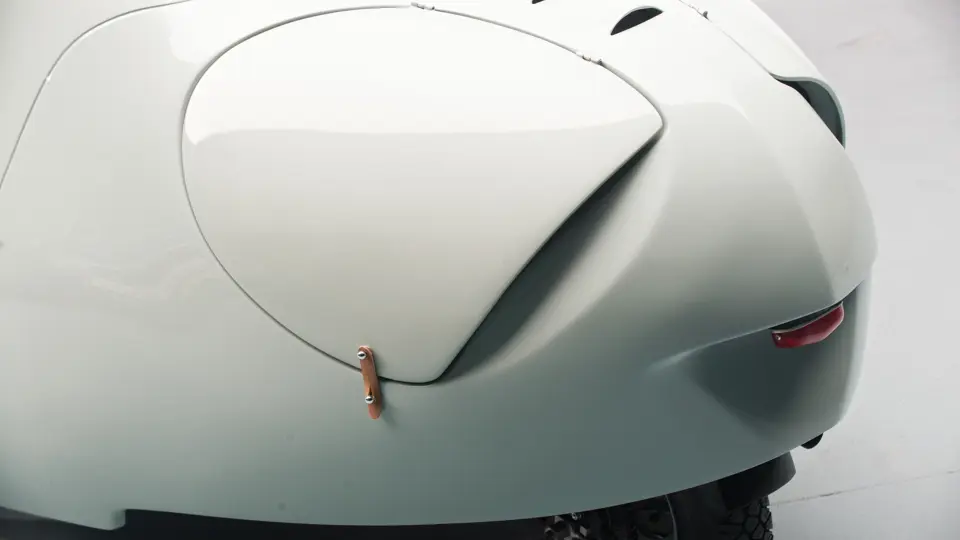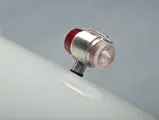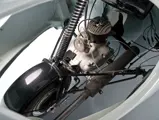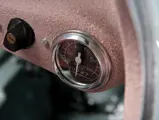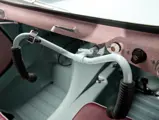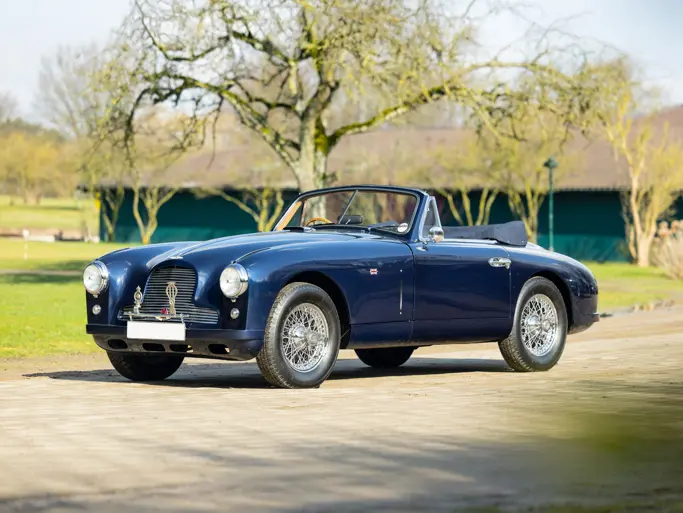A highly sought-after, painstakingly restored example.
SPECIFICATIONS
Manufacturer: Fuji Toshuda Motors Corporation
Origin: Tokyo, Japan
Production: 85
Motor: Gasuden 1-cyl, 2-stroke
Displacement: 122 cc
Power: 5.5 hp
Length: 9 ft. 7 in.
Identification No. 57570076
The delightful, jelly bean-shaped Fuji Cabin is one of very few three-wheeled microcars built in Japan.
With Japan in devastated turmoil, many companies scrambled for survival. In March of 1946, the automobile division of the Diesel Automobile Manufacturing Company was divided into the Hino truck and Isuzu automobile manufacturing companies. The aviation division became Hitachi Aviation. Developing new aviation technology was strictly forbidden by the Allies, as it was considered a war industry. So Hitachi Aviation, as well as other aircraft companies, tried to survive in non-war-related industries.
Hitachi subsequently changed their name to the Tokyo Gas and Electric Manufacturing Company, which, in 1952, began producing 60-cubic centimeter engines for motorcycles and had established itself as an engine producer of mainly small two-cycle engines. It merged with Fuji Automobile, and together, they built their own motorcycles under the names of Fuji Motor and Gasuden FMC. They also supplied engines to other motorcycle makers, such as Miyata, Zebra, Yamaguchi, Hikari, and Lucky. A decision was soon made to produce a scooter with full weather protection.
Ryuichi Tomiya was commissioned to design the car. He had been in charge of body design at Nissan Motors Ltd. before the war, and afterwards, he was responsible for the design of the Suminoe Flying Feather for Suminoe Manufacturing, of which 150 examples were built between 1954 and 1955. His work was highly respected, and he was known as “the Leonardo da Vinci of Japan.”
The Fuji Cabin made its appearance at the 1955 Tokyo Motor Show. It was a beautifully streamlined two-seater coupe on three wheels, and it was powered by a Gasuden scooter motor with kick start. It was a monocoque design, strengthened by a full-length tunnel bringing cooling air to the motor. There were two rounded beetle-wing lids providing access to the motor and allowing warm air to exit. At first there was a single door on the left, but the car in the Tokyo museum has two. It appears to have been designed to be driven only by the tiny models seen in the publicity pictures, as the interior is somewhat cramped, and some effort is required to climb over the central tunnel and attain the staggered driver’s seat. The steering is by a closely-placed set of handlebars. The small but well-engineered motor incorporates a reverse gear, unusual for the typical Western scooter-powered microcar. There is a feeling of solidity to the entire structure, which is helped by the coat of dense insulation material sprayed inside the cabin roof, dashboard, and sides. The front wheels are independently sprung on rubber, and the rear is on a swing arm with a coil strut, providing a comfortable ride. A single Cyclops headlamp graces the shapely nose.
Competition in the marketplace took the form of the 22-cubic centimeter Rabbit S-61scooter from Fuji Heavy Industries, at $450, and the 250-cubic centimeter Honda Dream motorcycle for $490. At $650, the Fuji Cabin offered full weather protection and high style for relatively little more money. It was planned to manufacture 400 to 500 units per month, but only 85 were built. Unfamiliarity with the handling of the fiberglass material and a limited marketing strategy were blamed.
This very rare car was found in need of restoration in the U.S.A., and it had changed hands several times before being acquired and restored by the museum. The restoration presented numerous challenges, as the primitive fiberglass, more of a “canoe cloth,” was fragile and difficult to work with. The side lights required complete re-fabrication with new plastic lenses moulded. Now in better-than-new condition, it is a significant, exceptionally rare vehicle in the microcar world.
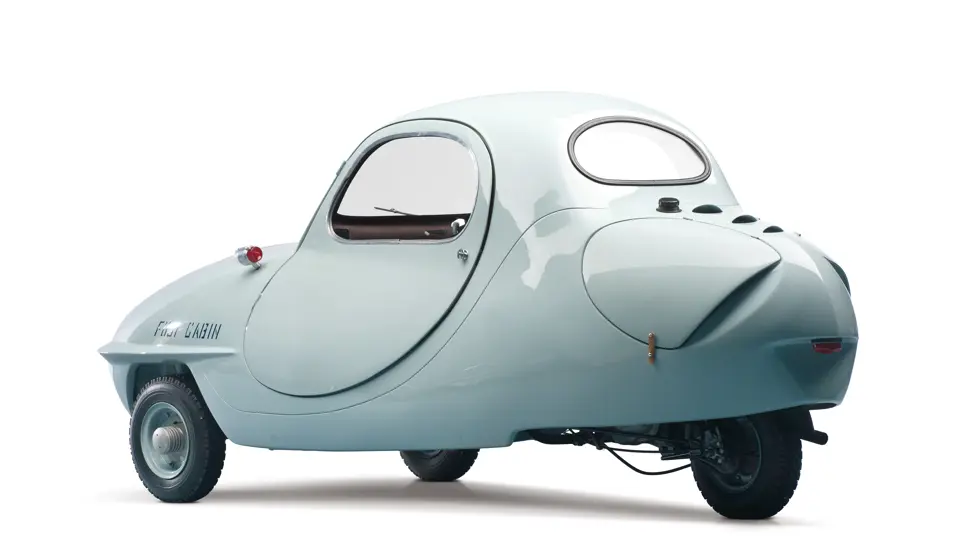
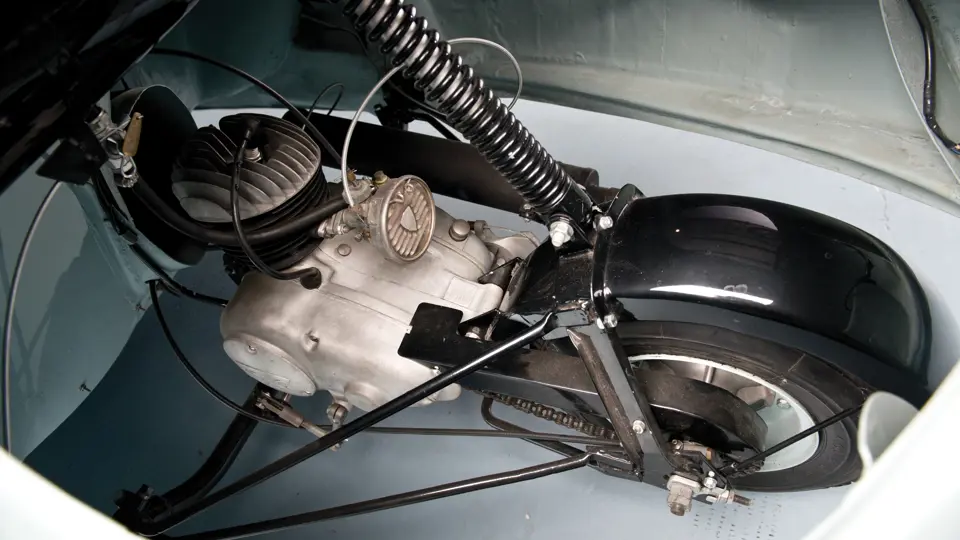


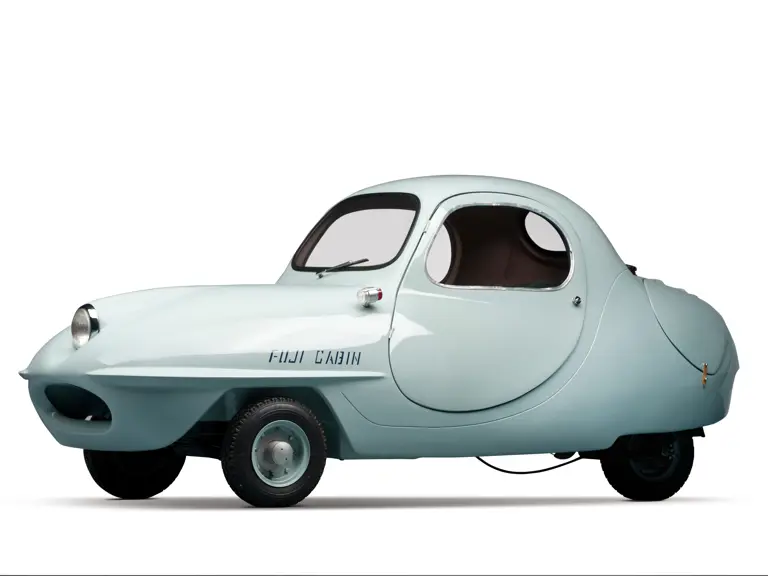
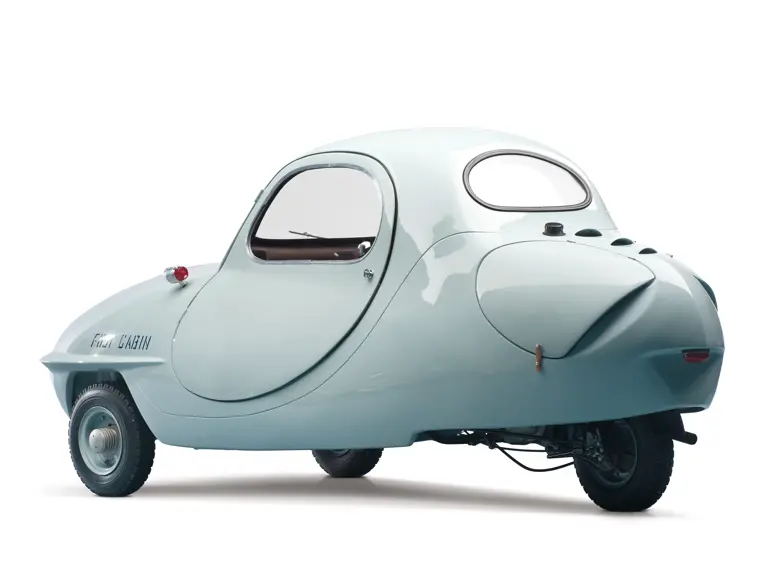
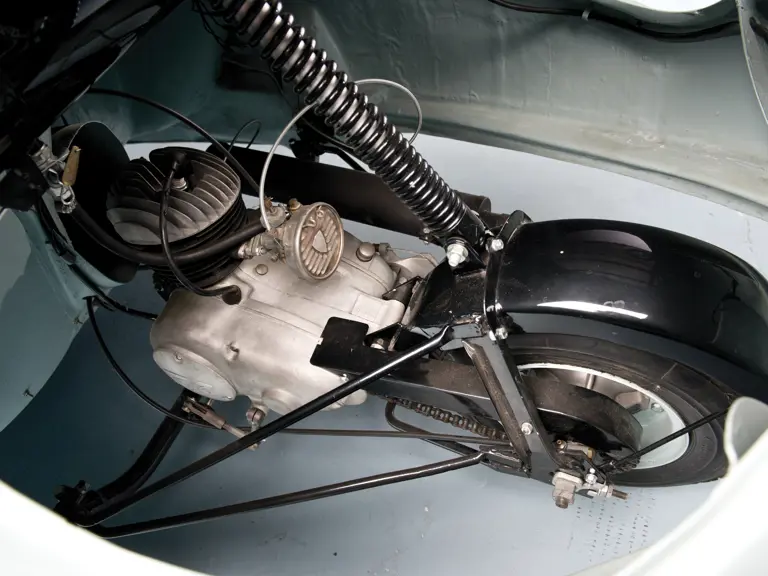

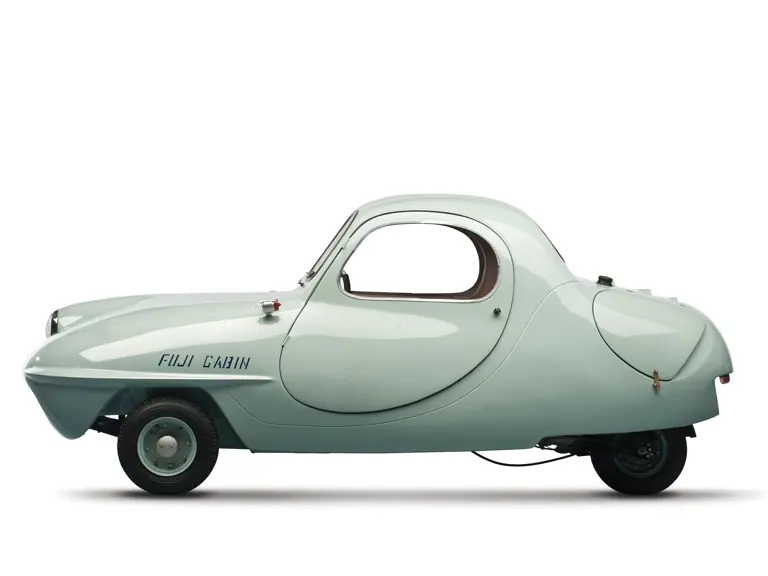
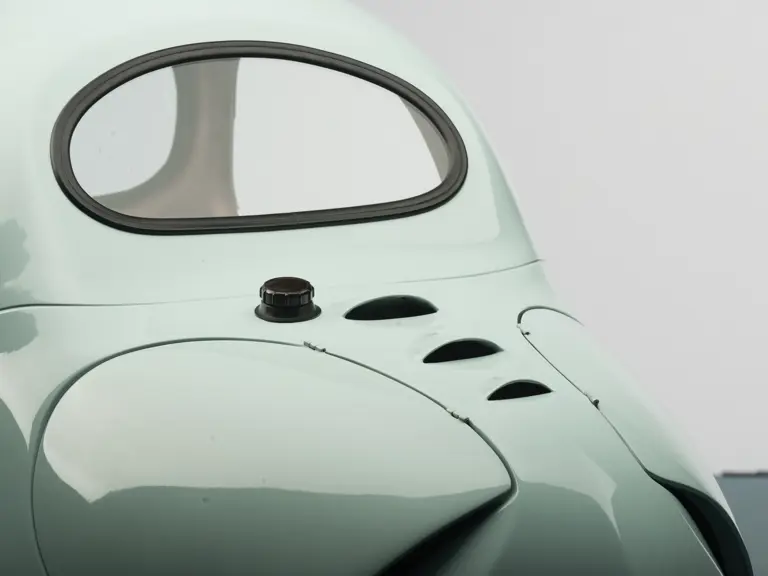
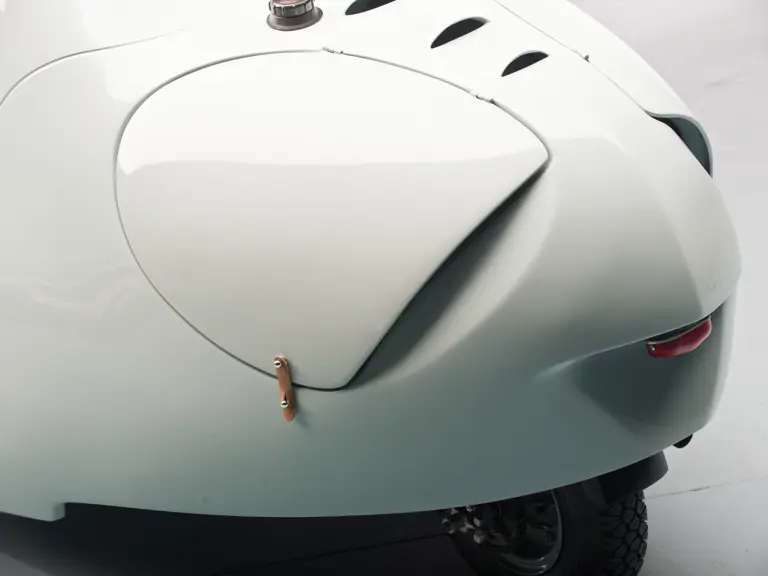
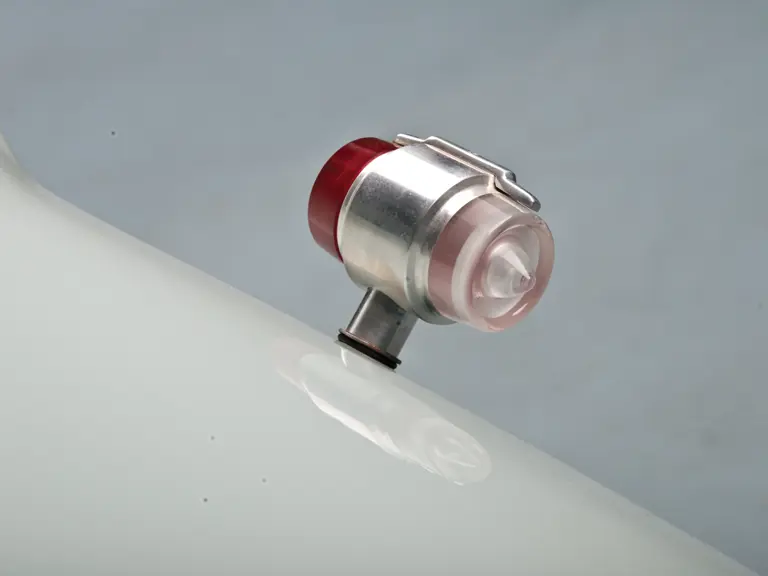
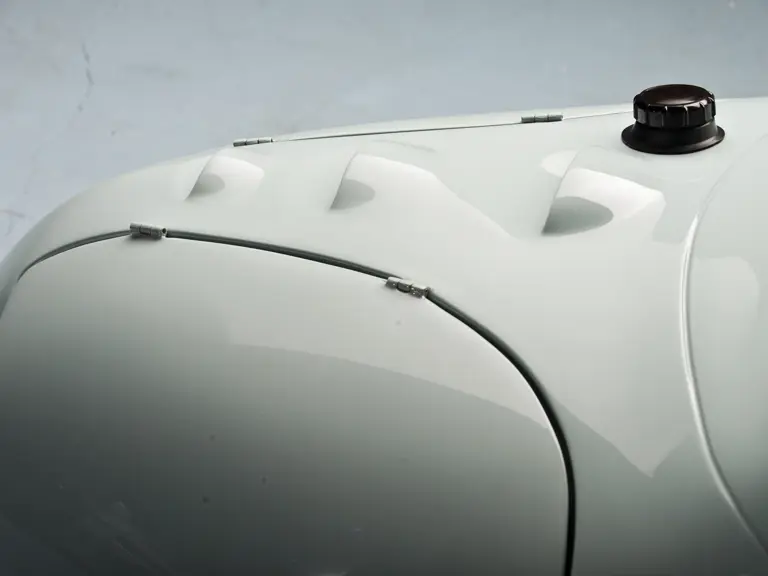
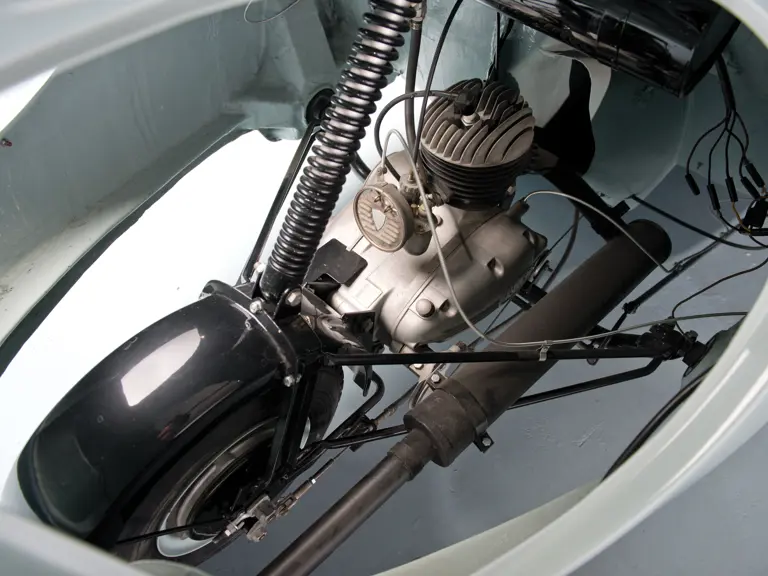
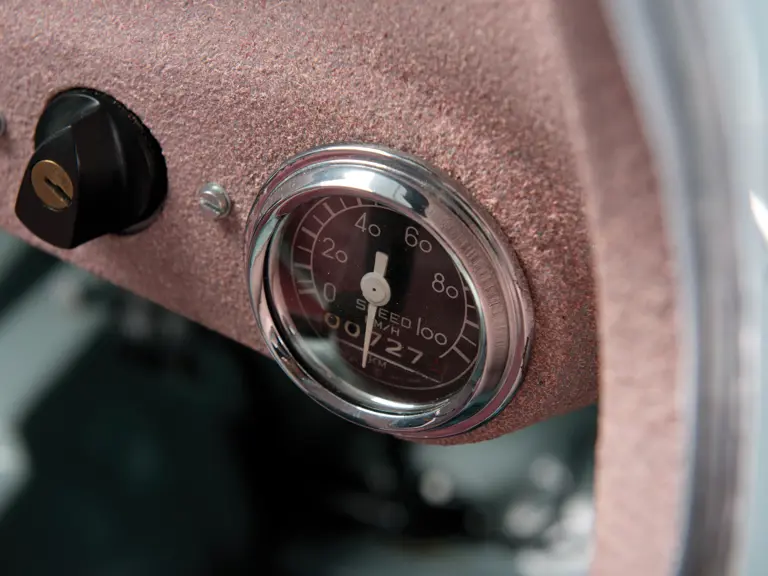
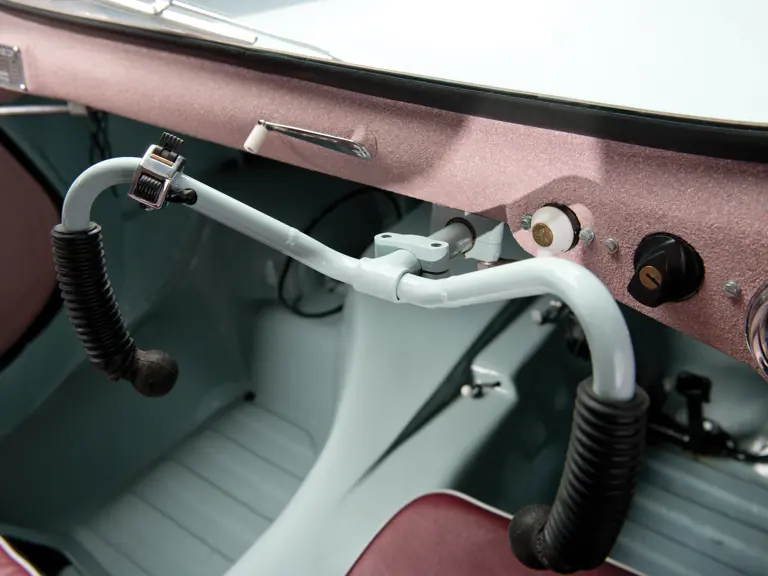


 | Madison, Georgia
| Madison, Georgia
